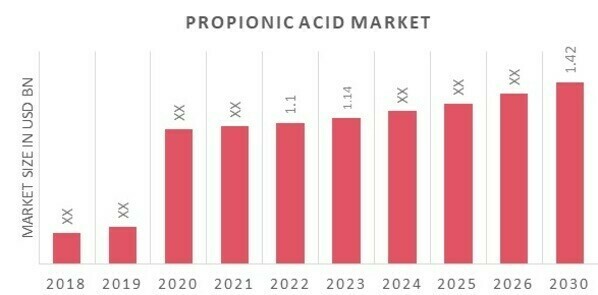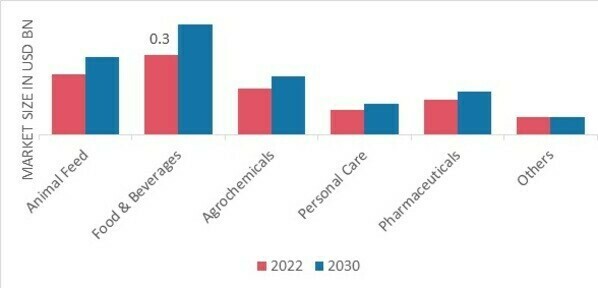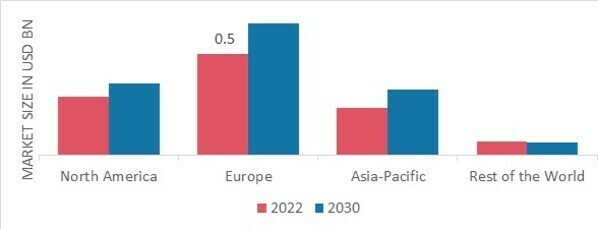Certified Global Research Member


Key Questions Answered
- Global Market Outlook
- In-depth analysis of global and regional trends
- Analyze and identify the major players in the market, their market share, key developments, etc.
- To understand the capability of the major players based on products offered, financials, and strategies.
- Identify disrupting products, companies, and trends.
- To identify opportunities in the market.
- Analyze the key challenges in the market.
- Analyze the regional penetration of players, products, and services in the market.
- Comparison of major players’ financial performance.
- Evaluate strategies adopted by major players.
- Recommendations
Why Choose Market Research Future?
- Vigorous research methodologies for specific market.
- Knowledge partners across the globe
- Large network of partner consultants.
- Ever-increasing/ Escalating data base with quarterly monitoring of various markets
- Trusted by fortune 500 companies/startups/ universities/organizations
- Large database of 5000+ markets reports.
- Effective and prompt pre- and post-sales support.
Global Propionic Acid Market Overview
Propionic Acid Market Size was valued at USD 1.1 billion in 2022. The Propionic Acid market industry is projected to grow from USD 1.14 Billion in 2023 to USD 1.42 billion by 2030, exhibiting a compound annual growth rate (CAGR) of 3.78% during the forecast period (2023 - 2030). Rising demand in the agricultural sector and demand for natural preservatives in the food & beverage sectors are the key market drivers. Source: Secondary Research, Primary Research, MRFR Database and Analyst Review
Source: Secondary Research, Primary Research, MRFR Database and Analyst Review
Propionic Acid Market Trends
- Increasing use across various industrial verticals to propel market growth
Propionic acid, or propanoic acid, is a three-carbon carboxylic acid that occurs naturally and can be used as a food preservative. In cheeses and baked goods, this ingredient is used to prevent mold growth. It works well against molds at concentrations between 0.05 and 0.25%. However, it does not affect yeast growth and is less effective at preventing bacterial growth. Additionally, ammonium propionate, produced primarily from propionic acid in the market and less corrosive to farm equipment than propionic acid, is used as a preservative in grain and animal feed.
It has been approved for use in food & beverage as well as animal feed by many organizations ly. With the exception of current good manufacturing practices, propionic acid is generally recognized as safe (GRAS) when used as an antimicrobial and flavoring agent in food. In the meantime, it is GRAS when used in feed as a chemical preservative. Propionic acid (E280) is listed as an authorized food additive in Commission Regulation (EU) No 231/2012 under the heading "Additives other than colors and sweeteners." With the code number 280, it is a recognized ingredient in Australia and New Zealand. Thus, the safe use of propionic acid has led to its increased use in various food products and has enhanced the Propionic Acid market CAGR ly.
In the agricultural sector, propionic acid is used as a preservative in grain and animal feed. Additionally, it is used to sanitize the areas where grain and silage are stored. Additionally, propionic acid is utilized as an antibacterial agent in livestock drinking water. Even in poultry litter, they are sprayed to eradicate bacteria and fungi. Furthermore, the growth of the livestock industry would result in a rise in feed consumption, according to the OECD-FAO Agriculture Outlook 2020-2029. According to projections, 75% of the world's demand for feed will be met by maize, wheat, and protein meal imports. This trend is the result of policies prioritizing the development of food crops over feed crops. Thus, such growth factors are anticipated to propel the Propionic Acid market revenue growth during the forecast period.
Propionic Acid Market Segment Insights
Propionic Acid Application Insights
The Propionic Acid market segmentation, based on Application, includes animal feed, food & beverages, agrochemicals, personal care, pharmaceuticals, and others. The food & beverages segment held the majority share in 2022, contributing to around 35-40% concerning the Propionic Acid market revenue. Propionic acid is a preservative for food, particularly bread and other baked goods, animal feed (directly or as its ammonium salt), and grains because it prevents mold growth and various bacteria. Moreover, the agrochemicals segment is anticipated to grow with a significant CAGR during the forecast period. The agricultural and food production industries have been forced to reconsider the use of antibiotics to prevent food spoilage and transmission of pathogens into the food chain due to emerging multidrug-resistant bacterial strains. Short-chain fatty acids are one type of alternative antimicrobial compound that is being used more frequently. (SCFA). One such SCFA, PA, has been suggested as a remedy for antibiotic overuse in developing nations because of its efficacy and low cost, which enable farmers to treat grain and animal feed while using fewer antibiotics.
Figure 1: Propionic Acid Market, by Application, 2022 & 2030 (USD billion) Source: Secondary Research, Primary Research, MRFR Database and Analyst Review
Source: Secondary Research, Primary Research, MRFR Database and Analyst Review
Propionic Acid Regional Insights
By Region, the study provides market insights into North America, Europe, Asia-Pacific, and the Rest of the World. Europe Propionic Acid market accounted for USD 0.5 billion in 2022 and is expected to exhibit a significant CAGR growth during the study period. Germany is the major market for the food industry and agriculture sector in the Region. Thus, the use of propionic acid in both industries drive the market growth. Moreover, ongoing investments in the food industry further boost the market's growth. According to Cosmetics Europe, the European cosmetics and personal care market will be valued at EUR 76.7 billion in 2021. It is the largest market for cosmetic products in the world. Further, the Germany Propionic Acid market held the largest market share, and the UK Propionic Acid market was the fastest-growing market in the European Region.
Further, the major countries studied in the market report are: The U.S., Canada, Germany, France, the UK, Italy, Spain, China, Japan, India, Australia, South Korea, and Brazil.
Figure 3: PROPIONIC ACID MARKET SHARE BY REGION 2022 (%) Source: Secondary Research, Primary Research, MRFR Database, and Analyst Review
Source: Secondary Research, Primary Research, MRFR Database, and Analyst Review
North America Propionic Acid market accounts for the second-largest market share. The rising demand for grain preservatives and secure animal feed is one of the main factors fueling the expansion of the market under study. The expanding convenience food sector has significantly aided the development of the market. During the forecast period, the rising demand for animal feed and the growing public awareness of safe animal nutrition did not significantly increase the demand for propionic acid.
The Asia-Pacific Propionic Acid Market is expected to grow at the fastest CAGR from 2022 to 2030. This is due to the increasing use of propionic acid in herbicides and the production of cellulose acetate propionate. The need and demand for packaged food, particularly hygienic food products, are other factors contributing to the growth of the propionic acid market. Additionally, propionic acid is used as a preservative to extend the shelf life of food products and stop the growth of bacteria and fungi. Moreover, China' Propionic Acid market held the largest market share, and the India Propionic Acid market was the fastest-growing in Asia-Pacific.
Propionic Acid Key Market Players & Competitive Insights
Major market players are investing in new products, which is expected to help the Propionic Acid market grow in the coming years. Companies in the market are also taking various initiatives to expand their worldwide footprint, with key market developments such as new product launches, agreements, increased investments, and collaboration with other companies. Competitors in the Propionic Acid industry must offer low-cost products to maintain their position in the market.
Major players are adopting strategies such as collaborating with other manufacturers in the Propionic Acid industry to expand their presence. In recent years, the Propionic Acid industry has launched the product in the market. The Propionic Acid market major player such as BASF Se (GERMANY), The Dow Chemical Company (US), Eastman Chemical Company (US), Oxea GMBH (GERMANY), PERSTORP ORGNR (SWEDEN), Krishna Chemicals (INDIA), Celanese Corporation (US), BIOMIN HOLDING GMBH (AUSTRIA), A.M. FOOD CHEMICAL CO. LTD (CHINA), and DAICEL CORPORATION (JAPAN), and others are working to expand the market demand by investing in research and development activities.
BASF Se is the biggest chemical producer in the world and is a multinational chemical company based in Europe. The company's headquarters is located in Ludwigshafen, Germany. In May 2022, BASF and SINOPEC, a 50/50 joint venture in Nanjing, China, started production at the second propionic acid plant. Customers in China and the rest of Asia Pacific can now purchase commercial goods. The new facility can produce 30,000 metric tons of propionic acid annually. Thus, the combined annual capacity of the two plants has increased to 69,000 metric tons.
The Dow Chemical Company is an American multinational company with its main office in Midland, Michigan. One of the top three chemical producers in the world is the company. In December 2017, the Industrial Solutions division of the Dow Chemical Company intended to increase the capacity of its Texas City propionic acid plant. According to the business, the recently announced plant expansion, extensive capabilities in chemical processing, and in-depth knowledge of the market will ensure we remain a top supplier of food and feed applications.
Key Companies in the Propionic Acid market includes
- BASF Se (GERMANY)
- The Dow Chemical Company (US)
- Eastman Chemical Company (US)
- Oxea GMBH (GERMANY)
- PERSTORP ORGNR (SWEDEN)
- Krishna Chemicals (INDIA)
- Celanese Corporation (US)
- BIOMIN HOLDING GMBH (AUSTRIA)
- M. FOOD CHEMICAL CO. LTD (CHINA)
- DAICEL CORPORATION (JAPAN), among others
Propionic Acid Industry Developments
May 2017: The multinational chemical corporation Oxea a German city of Oberhausen's carboxylic acid production facility has been upgraded. Oxea has increased the output of short-chain fatty acids (SCFAs), including propionic acid, butyric acid, and isobutyric acid. The Animal Feed (AF) quality butyric and propionic acids are produced by Oxea. AGP-free feed, also known as feed without antibiotic growth promoters, is made up of these products as its building blocks.
September 2022: For the first time, BASF provides propionic acid (PA) and neopentyl glycol (NPG) with a cradle-to-gate product carbon footprint (PCF)1 of zero2. The products, branded "NPG ZeroPCF" and "PA ZeroPCF," are made at the BASF facility in Ludwigshafen Verbund, Germany. With its innovative Verbund production system and the biomass balance (BMB) method, BASF achieves the zero PCF for NPG and PA. In addition, BASF uses renewable energy in the production of NPG.
Propionic Acid Market Segmentation
Propionic Acid Application Outlook
- Animal Feed
- Food & Beverages
- Agrochemicals
- Personal Care
- Pharmaceuticals
- Others
Propionic Acid Regional Outlook
- North America
- US
- Canada
- Europe
- Germany
- France
- UK
- Italy
- Spain
- Rest of Europe
- Asia-Pacific
- China
- Japan
- India
- Australia
- South Korea
- Australia
- Rest of Asia-Pacific
- Rest of the World
- Middle East
- Africa
- Latin America
Leading companies partner with us for data-driven Insights
Kindly complete the form below to receive a free sample of this Report
Tailored for You
- Dedicated Research on any specifics segment or region.
- Focused Research on specific players in the market.
- Custom Report based only on your requirements.
- Flexibility to add or subtract any chapter in the study.
- Historic data from 2014 and forecasts outlook till 2040.
- Flexibility of providing data/insights in formats (PDF, PPT, Excel).
- Provide cross segmentation in applicable scenario/markets.





















